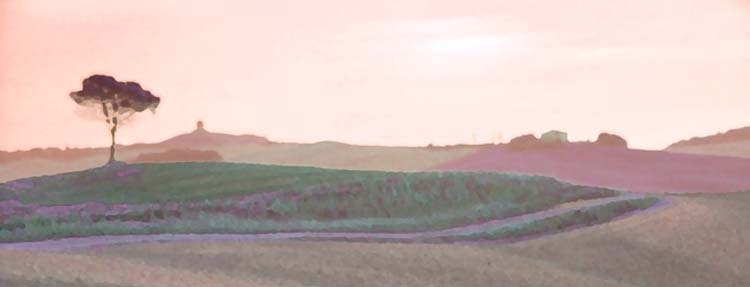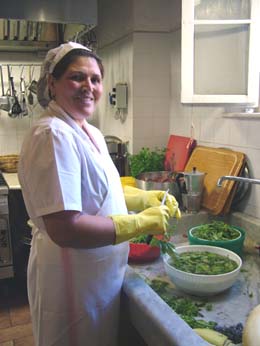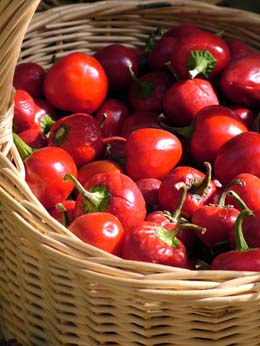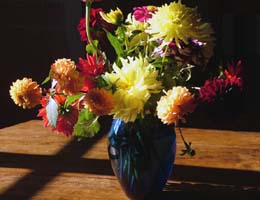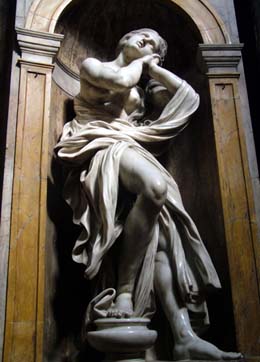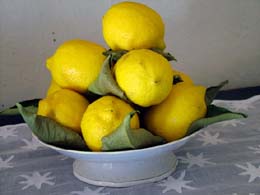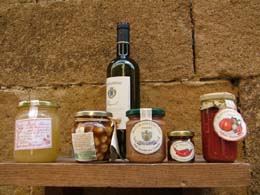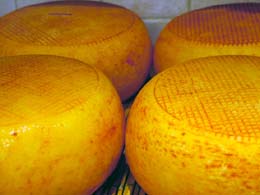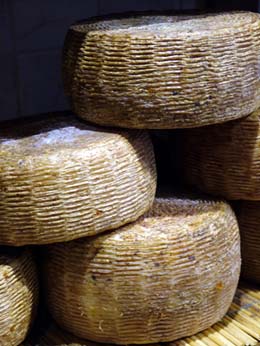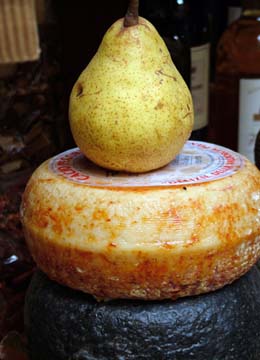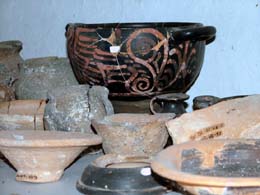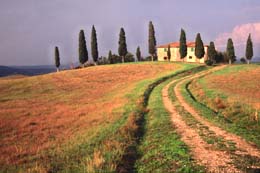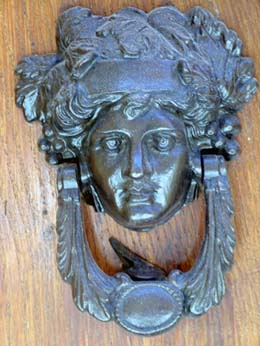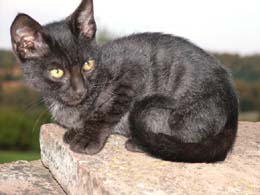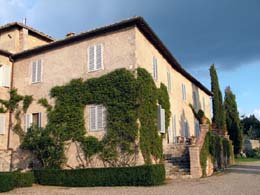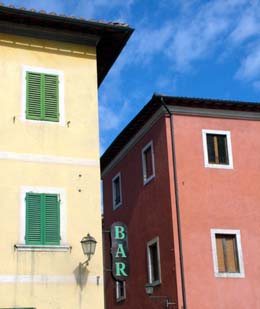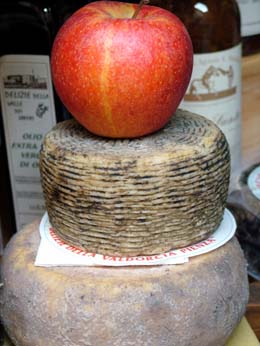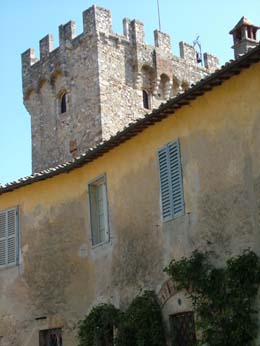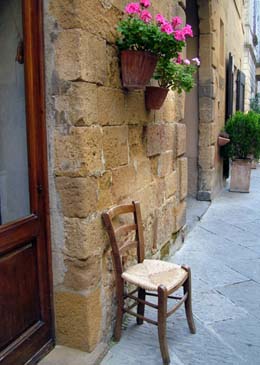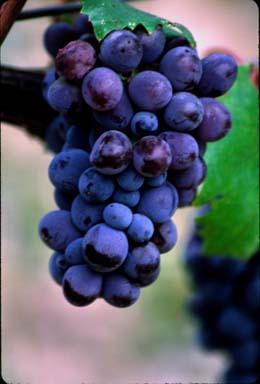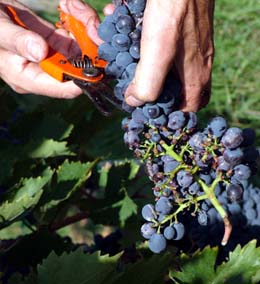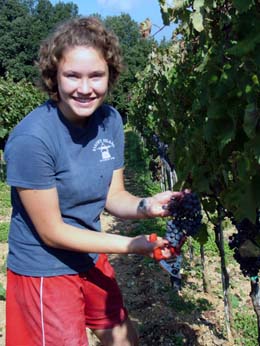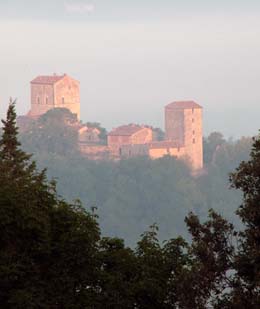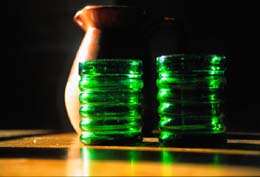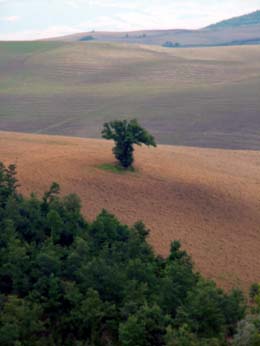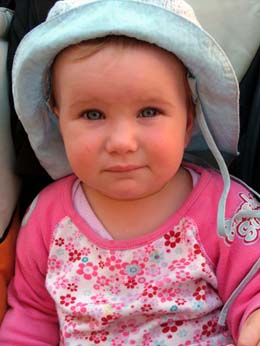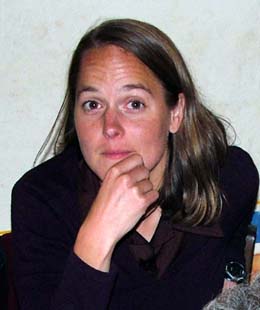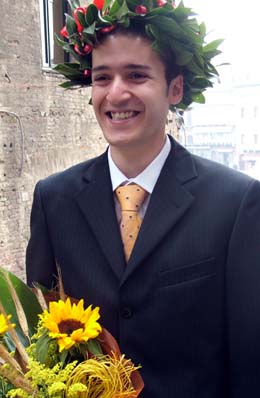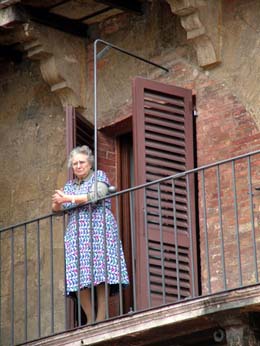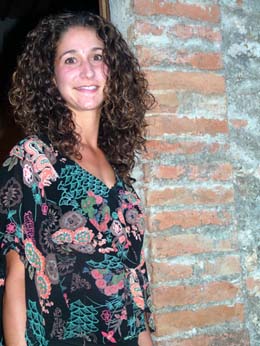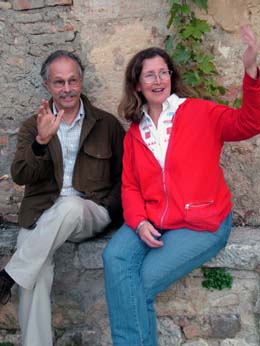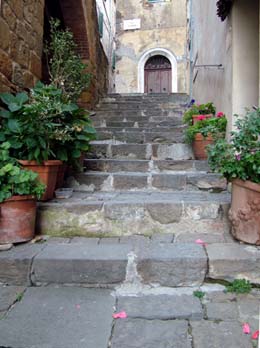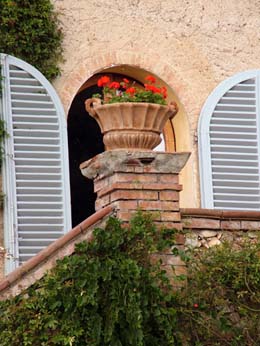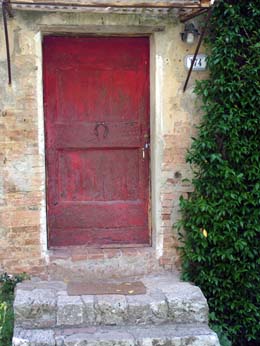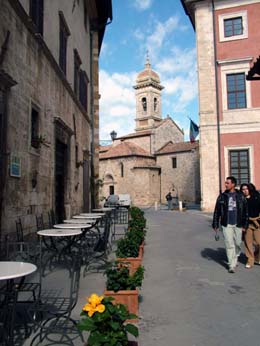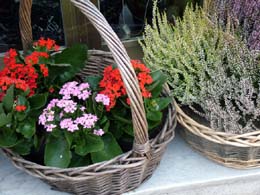|
|
||||
An
Agriscape Experience: Nowhere in the world are rural landscapes as intriguing, as illuminating, or as enlightening as they are in the farmlands and vineyards of Tuscany. Permeated with patterns of seasonal crops, cypress spires and harvest colors, the iconic Tuscan landscape emphasizes harmony and balance within an agricultural context. More agriscape than landscape, this part of the world celebrates the lay of the land and the production of food and wine in ways that are healthy, wholesome, and sustainable. The Tuscan agriscape is a special region also known for its surrealistic light; imparting a gossamer-like quality that softens contrast while infusing an angelic glimmering glow to the land. Perhaps this is why painters, photographers, and writers flock to the countryside, so that they can see the world through a new light, through different eyes. Tuscany does that for those who come. In the heart of this region, not far from the medieval city of Siena, is the Castello di Spannocchia, a private estate encompassing 1200 acres of vineyards, olive groves, fields and mountain forests. One of the first privately-owned wildlife sanctuaries in Italy, Spannocchia is home to stands of elm, oak, chestnut and pine that shelter deer, fox, wild pigs, porcupines and badgers, as well as a variety of birds. It is a place where self-sustaining organic agriculture is not only practiced, but the harvested food is prepared and served at meals to the many guests at Spannocchia — from photographers, farmers, and foresters to writers, artists and actresses. Organically produced ingredients from the property include wine, olive oil, vegetables, grains, breads, and honey. Tuscany Through the Lens I came to Tuscany as a student of photography, hoping to capture the ethereal quality of light through my lens. I would spend a week photographing with 12 other workshop participants from all over North America. My buddy, Darren, and I were looking to capture beautiful images of the Tuscan landscape. Under the benevolent tutelage of our instructors, Susanna Gaunt and Elizabeth Stone from the Rocky Mountain School of Photography, we stretched our vision, unlocked our creativity, and focused our inner eye so as to capture the essence of this secret, magical place. Whether macro for details or telescopic for big landscapes, by the end of the week, our images virtually sparkled with spirit. After all, subject matter is everywhere; you only need to open your eyes to see. Mark Twain understood the need for the creative muse, when he said, “You cannot depend on your eyes when your imagination is out of focus.” The key is to look for the extraordinary in the every day. From vases of flowers that look like Rembrandt paintings, luscious lemons on trees, roaming kittens, organic crops, beneficial blooms, and heirloom animals; the photographic possibilities are endless. The hours are long but pleasant, punctuated with photo critiquing, lectures, field assignments, and shared meals at the Spannocchia long table. Our field trips to the surrounding countryside include sunrise at the hill town of Monterriggioni and a hauntingly eerie night shoot at San Galgano — an abandoned yet majestically lit abbey — one of the most beautiful places in the Tuscany. San Gimignano brings us shops filled with olive oil and wine as well as salami made both from pork and from cinghiale (wild boar meat). We explore the depths of color and culture in Pienza, with its ubiquitous bicycles and prolific displays of regional food. Siena is noted for its Campo — a majestic town square where people become the show, or in the case of our class, the photo. But it is the famous Duomo, built in the 12th and 13th centuries, one of the prettiest Gothic-style churches in Italy that challenges our photographer’s eye with pattern, lines, and shape. Inside, one of the altars has statues by Michelangelo, while works by Bernini and Donatello are housed in the chapels. The hill town of Montalcino, a small town situated on a hill covered with olive groves and the famous Brunello vineyards, offers numerous opportunities for sampling of the vine. The Abbey of Sant'Antimo, a 12th century Romanesque church surrounded by rolling hills, is covered in olive groves and vineyards, cradled in one of the most picturesque and idyllic settings imaginable. For whatever reason, I become obsessed with capturing my “grape” photos at the expense of the more traditional “travel brochure” scenes. We celebrate the last full day with a sunrise shoot at Buonconvento, an important agricultural centre on the gentler side of the Sienese Clay Hills. San Quirico D’Orcia, with its original medieval street plan, and the Horti Leonini gardens designed around 1540 by Diomede Leoni, add flourishing touches to our ever-growing Tuscany portfolio of photos. These side jaunts are like seasonings for food; they serve to enhance our appreciation for people and place, as we develop a better sense of the region’s architecture and cultural identity. However, I also find that the land and people at Spannochia are equally as captivating, if not intoxicating for the lens. The longer I immerse myself in place, the more I capture what I thought was the elusive spirit of Tuscany. It is as if a spiritual wholeness envelops the property, giving sight to the mind’s eye and inspiration to the soul. The Agriscape at Spannocchia Spannocchia is about organic and sustainable agriculture; it’s about living in harmony with the land, about rediscovering heirloom foods for quality and taste, about preserving animal and plant biodiversity, and about preserving agricultural and cultural heritage for future generations. In practicing sustainable agriculture, the Spannocchia Foundation states:
Spannocchia’s “Noah’s Ark” project raises traditional breeds of farm animals threatened with extinction. It is their contribution and effort in preserving the diverse genetic stock and in preventing homogenization of the gene pool — before it is too late. Some of the animals include: Cinta Senese pigs, Pomarancina sheep, Calvana cows, Monterufolino ponies, and Monte Amiata donkeys. The overarching theme is one of conservation, for it provides direction and continuity with all programs at Spannocchia.
History of Spannocchia Once a medieval stronghold, Spannocchia traces its history to around the 12th century, the same time its bell tower was constructed. For over 800 years, it remained an agricultural estate (Tenuta), owned by the powerful Spannocchi family. The mezzadria tenant farming or sharecropping system, not only defined rural Tuscany but inadvertently preserved the agriscape until shortly before the Second World War, when new technologies and improved communications made it obsolete. For the first time in centuries, Tuscan land changed ownership through a combination of land and estate sales. This is when Tenuta di Spannocchia was sold to Delfino Cinelli in 1925. At first a research and educational center for the multitude of Etruscan artifacts on site, today, Spannocchia is run by the great granddaughter, Francesca Cinelli, and her husband, Randall Stratton. Together, they manage the property and develop new educational programs focusing on Tuscan culture and environmental conservation. In 2002, they created the Spannocchia Foundation, offering educational and research opportunities at the Castello, while hosting various seminars and workshops on site, and providing housing and meals to guests. The Spannocchia Foundation seeks to encourage global dialogue about sustaining cultural landscapes for future generations through the example of the Tenuta di Spannocchia. The Shop at Spannocchia Whatever you do, don’t leave Spannocchia without visiting its shop — a display of estate organic food products and fiber-derived gifts from the managed forests on site. For me, it was essential that I buy farro, a mainstay grain of Tuscany that is making a comeback. Used in lieu of pasta in vegetable soups and cold salads, it is especially popular with health-conscious dieters and diets, not to mention foodies and connoisseurs. (If listeners and readers show an interest, I can share several recipes in a future article.) Other organic products from the Castello include wine, olive oil, prosciutto, salami, pasta, honey, vin santo, and baked goods (in season). And there are books, postcards and notecards, and wood products created on site using Spannocchia hardwoods to ensure you won’t go home empty-handed. The Gift of Spannocchia Perhaps the most valuable gift you take from Spannocchia is the gift of renewal and an appreciation for the interconnectivity of life. This lesson is best demonstrated through sustainability programs as practiced at Castello. Spannocchia embodies the concept of “slow food” and “slow travel,” those who take the time to experience the land and food, the people and culture, with dimension and depth rather than superficial samplings. Slow Travel is about travelers staying in apartments, villas, houses, cottages, cabins, castles, estates, and condos that you rent by the week. Slow Food is dedicated to preserving the diversity of all countries, the biodiversity of foods, and savoring their unique flavors. The gift of Spannochia is the opportunity to experience local food, culture, and history as part of a global understanding on the importance of individual stewardship and community involvement. Take the time to visit this unique piece of history, an agriscape experience you won’t forget. For more Information about Spannochia visit its website (www.spannocchia.org). or contact: Spannocchia Foundation
Bella
Italia: Rocky Mountain School of Photography (www.rmsp.com)
www.italiantourism.com A 2006 Calendar of Workshops • Governor
Dummer Academy in Tuscany & Rome (March 7-13) The Photographic Art of Karin Leperi Talking Travel wishes to extend its sincere thanks and appreciation to Karin Leperi for sharing her art, her wisdom, and her principles with us, our listeners, and our readers. Karin is an educator in the best sense of the word. As a consultant to the International Ecotourism Society (TIES), and agritourism specialist, and as a highly skilled travel photographer who understands the narrative power of images and imagery, Karin communicates a global awareness of the interdependence of all things. Her perceptiveness, ability to conceptualize on the highest level, and her profound commitment to sustainability at every level of the human experience confirm her humanistic approach to travel journalism. Karin can be reached at thetravelmeister@gmail.com
|
All photographs copyright Karin Leperi. |
|||
